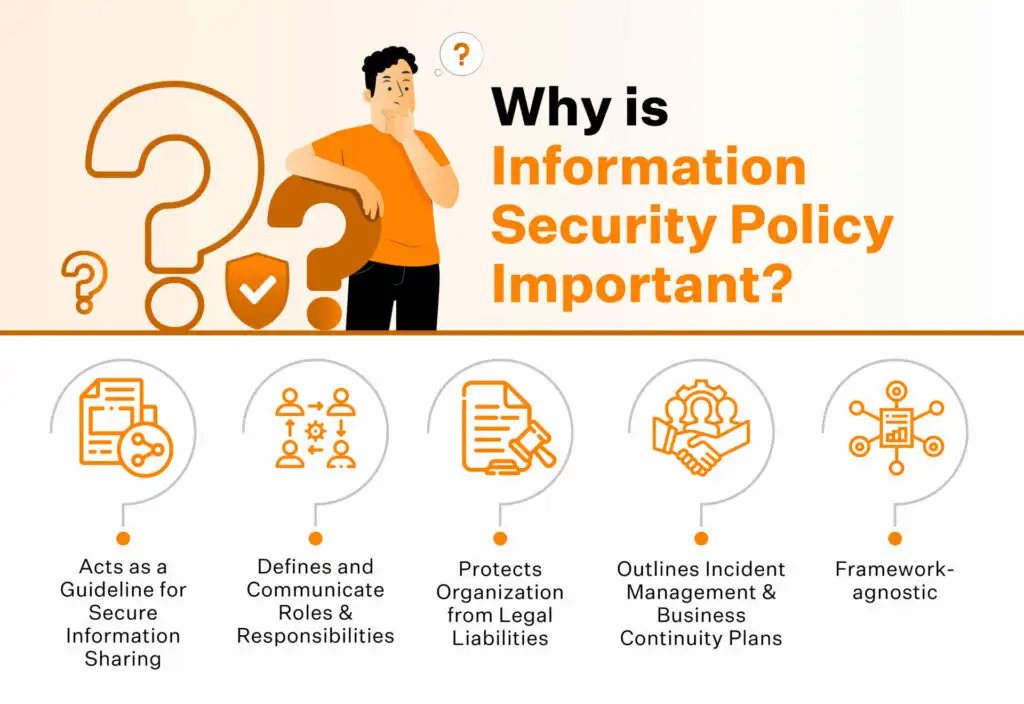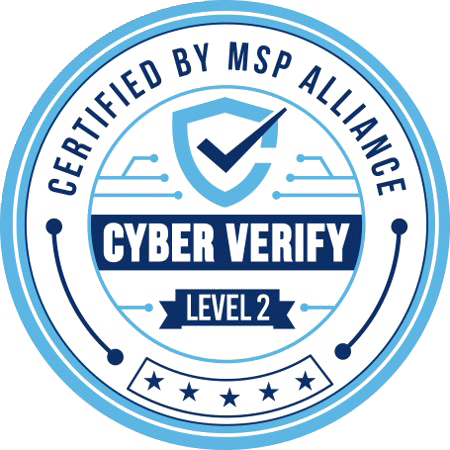“Information and data are the lifeblood of modern businesses, driving critical decisions and fostering growth.” Brian Leger, Co-Founder of InfoTECH Solutions.
These assets, which include customer details, financial records, and intellectual property, are sacred and essential for maintaining a competitive edge.
Cyber threats are no longer just a concern for large corporations; they impact businesses of all sizes. Small and medium-sized enterprises (SMEs) are increasingly targeted because they often lack robust security measures. The consequences of a data breach can be devastating, leading to loss of sensitive information, operational disruption, and severe financial penalties
A comprehensive information security strategy not only safeguards valuable information but also fortifies trust with customers and partners. This blog will explore top information security strategies to help businesses protect their most precious assets and maintain operational integrity.
Effective Information Security Strategies for Data Protection
1. Conduct Regular Risk Assessments
Regular risk assessments are crucial to identify an organization’s potential security risks and vulnerabilities. These assessments help businesses understand the likelihood and impact of various threats, enabling them to prioritize security measures effectively.
By regularly evaluating their security posture, companies can stay ahead of emerging threats and ensure their cybersecurity strategy remains up-to-date.
Key Steps in Risk Assessments:
- Identify critical assets and assess their value.
- Evaluate potential threats, including cyber attacks, unauthorized access, and physical security breaches.
- Analyze the likelihood and impact of each threat.
- Develop a plan to mitigate identified risks.
2. Implement Multi-Factor Authentication (MFA)
Passwords alone are no longer sufficient to protect against unauthorized access. Multi-factor authentication (MFA) adds an extra layer of security by requiring users to provide two or more verification factors to access sensitive information.
Benefits of MFA:
- Reduces the risk of unauthorized access even if passwords are compromised.
- Enhances security for remote workers and mobile devices.
- Provides an additional layer of protection against phishing attacks.
3. Establish a Robust Incident Response Plan
More than 77 percent of organizations do not have an incident response plan. A well-defined incident response plan is essential for quickly and effectively addressing security incidents.
This plan outlines the steps your organization will take in a security breach or other cyber incidents.
Components of an Incident Response Plan:
- Clear roles and responsibilities for team members.
- Procedures for identifying, containing, and eradicating threats.
- Communication protocols for internal and external stakeholders.
- Post-incident analysis to improve future responses.

Source: Sprinto
4. Regularly Update and Patch Systems
Outdated software and unpatched systems are prime targets for cyber attacks. Regularly updating and patching systems is a simple yet effective way to prevent security incidents. Automated patch management tools can help ensure all systems are consistently updated.
Best Practices for Patch Management:
- Schedule regular updates and patches
- Use automated tools to manage patch deployment
- Monitor systems for vulnerabilities and apply patches promptly
5. Conduct Employee Awareness Training
95% of cybersecurity breaches are due to human error. Conducting regular employee awareness training helps ensure that all staff members understand the importance of information security and their role in maintaining it. Training should cover phishing attacks, password management, and safe internet practices.
Key Training Topics:
- Recognizing phishing emails and other social engineering attacks.
- Best practices for password management.
- Proper handling of sensitive data.
- Reporting suspicious activities and incidents.
6. Utilize Advanced Threat Detection Tools
Advanced threat detection tools, such as intrusion detection systems (IDS) and security information and event management (SIEM) systems, can help organizations detect and respond to potential threats in real time. These tools analyze network traffic and system logs to identify suspicious activity and alert security teams to potential issues.
Effective Threat Detection Tools:
- Intrusion Detection Systems (IDS)
- Security Information and Event Management (SIEM) systems
- Endpoint Detection and Response (EDR) solutions
7. Encrypt Sensitive Data
Encrypting sensitive data is a critical security measure that ensures information remains protected, even if it is intercepted by unauthorized parties. Encryption should be applied to data at rest and in transit to provide comprehensive protection.
Encryption Best Practices:
- Encryption Applications:
- Encrypt emails containing sensitive information.
- Use encrypted connections for online transactions (HTTPS).
- Encrypt stored data on servers, databases, and backups.
- Implement end-to-end encryption for communications.
8. Implement Physical Security Measures
While much focus is on digital security, physical security measures are equally important. Protecting physical access to sensitive data and systems can prevent unauthorized individuals from accessing critical information.
Key Physical Security Measures:
- Secure access controls to data centers and server rooms
- Use surveillance systems to monitor sensitive areas
- Implement policies for handling and disposing of physical media
9. Develop a Security Framework
A security framework provides a structured approach to implementing and managing your information security strategy. It helps ensure that all aspects of your security program are aligned with industry standards and best practices.
Popular Security Frameworks:
- NIST Cybersecurity Framework
- ISO/IEC 27001
- CIS Controls
- COBIT
10. Perform Regular Security Audits
Regular security audits are essential for maintaining the effectiveness of your information security strategy. These audits help identify gaps in your security measures and provide insights into areas for improvement.
Audit Steps:
- Review current security policies and procedures.
- Assess the effectiveness of security controls.
- Conduct vulnerability scans and penetration testing.
- Develop action plans to address identified weaknesses.
11. Establish Data Backup and Recovery Plans
Data loss can occur due to cyber attacks, hardware failures, or human error. Establishing robust data backup and recovery plans ensures that your organization can quickly restore operations during a disaster.
Backup Best Practices:
- Implement regular, automated backups.
- Store backups in multiple locations, including offsite.
- Test backup and recovery procedures regularly.
- Encrypt backup data to protect against unauthorized access.
Key Components of a Comprehensive Information Security Strategy Plan
| Component | Description | Importance |
| Asset Management | Inventory and classification of all information assets | Ensures critical assets are identified and prioritized |
| Risk Management | Ongoing process to identify, assess, and mitigate security risks | Reduces the potential impact of threats on the organization |
| Access Control | Policies and mechanisms to manage who has access to information assets | Prevents unauthorized access to sensitive data |
| Data Protection | Strategies to safeguard data integrity, confidentiality, and availability | Protects data from breaches and ensures compliance with regulations |
| Incident Response | Procedures for detecting, responding to, and recovering from security incidents | Minimizes damage and ensures quick recovery from security incidents |
| Compliance and Auditing | Regular checks to ensure adherence to legal and regulatory requirements | Avoids legal penalties and maintains organizational trust |
| Security Awareness Training | Ongoing education for employees on security best practices | Reduces risk of human error and increases overall security awareness |
| Monitoring and Reporting | Continuous monitoring of security systems and regular reporting of status | Ensures timely detection and response to potential security threats |
Secure Your Business with InfoTECH Solutions’ Expertise
Implementing strong information security strategies is crucial for safeguarding your business against cyber threats. However, developing and maintaining an effective security framework requires expertise and continuous effort.
| Discover Trusted Cybersecurity Services in New Orleans, LA |
This is where InfoTECH Solutions excels. Our team of cybersecurity professionals is dedicated to protecting your sensitive information and ensuring your business operates securely.
We offer comprehensive security programs tailored to your needs, from risk assessments to incident response planning.
Don’t wait until a cyber attack strikes. Contact InfoTECH Solutions today to schedule a free consultation and fortify your defenses. Let us be your trusted partner in cybersecurity.



